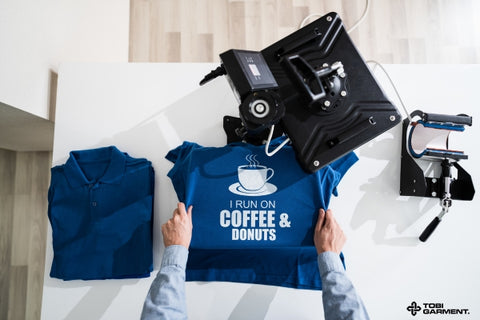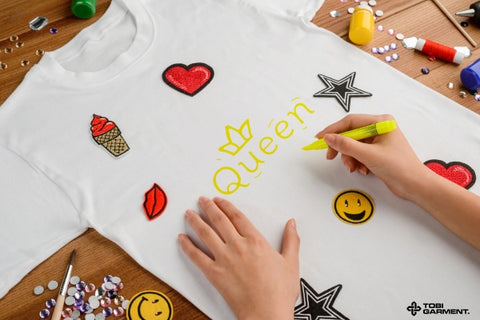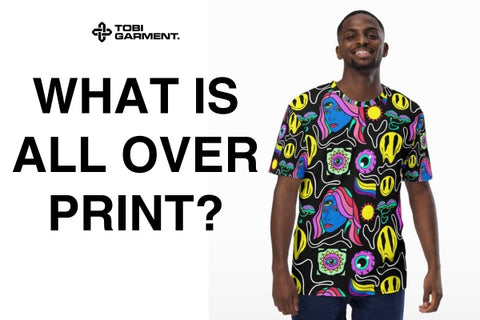
Are you looking to create stunning custom t-shirts but unsure where to start? Look no further! In this comprehensive guide, we'll dive into the world of t-shirts for printing, helping you discover the best options for your needs. Whether you're a seasoned designer, a small business owner, or simply someone who wants to create unique apparel, this article has got you covered.
Find the Perfect Blank T-Shirt for Printing
When it comes to custom t-shirt printing, the foundation of your design starts with the blank t-shirt itself. Choosing the right t-shirt can make all the difference in the final result. Let's explore some key factors to consider when selecting the perfect blank t-shirt for your project:
Understanding T-Shirt Fabrics
The fabric of your t-shirt plays a crucial role in the overall look and feel of your design. The most common fabrics used for t-shirt printing are:
- 100% Cotton: Known for its softness, breathability, and durability, cotton is a popular choice for t-shirt printing. It's available in various weights and textures, such as ring-spun, combed, and airlume.
- Cotton Blends: These fabrics combine cotton with other fibers like polyester or rayon, offering a unique blend of comfort and durability.
- Polyester: Polyester t-shirts are known for their moisture-wicking properties, making them ideal for athletic or outdoor activities.
- Tri-Blend: Tri-blend t-shirts are a combination of three fabrics, typically cotton, polyester, and rayon. They offer a soft, vintage-inspired feel with a slight stretch.

Choosing the Right T-Shirt Size and Fit
When selecting t-shirt sizes, consider the intended audience and the desired fit. Offer a range of sizes to accommodate different body types, from extra-small to 3XL or more. Pay attention to the fit, whether you prefer a classic, relaxed fit or a more tailored, slim fit.
Read more: A Guide to Popular Types of T-Shirt Printing Methods
Considering T-Shirt Weight and Thickness
T-shirt weight is measured in ounces (oz) or grams per square meter (GSM). Lighter weights, around 4.2 oz to 5.3 oz, are ideal for summer or warmer climates, while heavier weights, around 5.3 oz to 6.1 oz, provide more durability and a slightly thicker feel.
Exploring Different Neckline and Sleeve Options
T-shirts come in various neckline styles, such as crew neck, V-neck, and scoop neck. Sleeve lengths can range from short sleeves to long sleeves, with options like tank tops and racerbacks in between.
Finding T-Shirts for Specific Occasions
Consider the occasion or event you're designing for when selecting t-shirts. For example, if you're creating t-shirts for a sports team, you might opt for moisture-wicking polyester. If you're designing t-shirts for a music festival, a vintage-inspired tri-blend might be the perfect choice.
Ordering Samples to Test Quality
Before placing a large order, consider ordering samples to test the quality and fit of the t-shirts. This allows you to assess the fabric, print quality, and overall feel of the t-shirt before committing to a bulk purchase.
Sourcing Blank T-Shirts from Reliable Suppliers
When sourcing blank t-shirts, look for reputable suppliers who offer high-quality products and reliable customer service. Research their reputation, read reviews, and ask for recommendations from other designers or businesses.
Read more: Print on Demand vs Dropshipping: Which One Fits You Best?
The Different Types of Cotton
Cotton is a popular choice for t-shirt printing due to its softness, breathability, and durability. Let's explore the various types of cotton used in t-shirt manufacturing:
Cotton
Cotton is a natural fiber that grows on the cotton plant. It's known for its soft, absorbent, and durable properties.
Ring-Spun Cotton
Ring-spun cotton is a type of cotton yarn that undergoes a spinning process that twists the fibers tightly together. This results in a softer, smoother, and more durable fabric.
Open-End Cotton
Open-end cotton is a less expensive alternative to ring-spun cotton. It's produced using a different spinning method that results in a coarser, less uniform fabric.
Combed Ring-Spun Cotton
Combed ring-spun cotton is a type of ring-spun cotton that undergoes an additional combing process. This removes shorter fibers, resulting in a smoother, more uniform fabric with a higher thread count.
Airlume Ring-Spun Cotton
Airlume ring-spun cotton is a high-quality type of ring-spun cotton that undergoes an advanced spinning process. It's known for its exceptional softness, durability, and color retention.
Read more: Print on Demand Companies: Your Guide to Success
Design Your Own Custom T-Shirts
Now that you've selected the perfect blank t-shirt, it's time to bring your design to life. Here are some tips for creating eye-catching custom t-shirts:
Understanding the Basics of T-Shirt Design
Before you start designing, familiarize yourself with the basics of t-shirt design. Consider the placement of your design, the size of your graphics or text, and the overall balance of your composition.
Creating Eye-Catching Graphics and Logos
Use design software or hire a professional graphic designer to create high-quality graphics and logos for your t-shirts. Ensure your designs are vector-based for optimal scalability and print quality.

Incorporating Text Effectively
If your design includes text, choose fonts that are legible and complement your overall aesthetic. Avoid using too many different fonts or sizes, as this can make your design look cluttered.
Read more: Express Yourself with Custom Print on Demand Shirts
Choosing the Right Fonts and Typography
Select fonts that are easy to read and fit the tone of your design. Consider using a combination of serif and sans-serif fonts for visual interest.
Selecting Colors that Pop
Choose colors that stand out and complement each other well. Avoid using too many colors, as this can make your design look busy. Consider using a color scheme that reflects your brand or the occasion.
Designing for Different Print Methods
Different print methods, such as screen printing, digital printing, or heat transfer, may require specific design considerations. Research the requirements for your chosen print method to ensure your design translates well.
Using Design Software and Tools
There are many design software options available, from professional programs like Adobe Illustrator to user-friendly online tools like Canva. Choose a tool that suits your skill level and design needs.
Getting Design Inspiration
Look for inspiration from other t-shirt designs, fashion trends, and your target audience. However, be sure to create original designs that don't infringe on copyrights or trademarks.
Read more: Direct-to-Garment vs Sublimation Printing: Pros and Cons
FAQ
1. What is the best fabric for t-shirt printing?
The best fabric for t-shirt printing depends on your specific needs and preferences. Cotton and cotton blends are popular choices due to their softness, breathability, and durability.
2. Can I print on any t-shirt?
No, not all t-shirts are suitable for printing. Look for t-shirts made from high-quality fabrics like cotton or cotton blends that are designed for printing.
3. How do I choose the right t-shirt size for my design?
Consider the intended audience and the desired fit when selecting t-shirt sizes. Offer a range of sizes to accommodate different body types.
4. Can I use any design software for t-shirt printing?
While there are many design software options available, some are better suited for t-shirt printing than others. Look for vector-based software like Adobe Illustrator or user-friendly online tools like Canva.
5. How do I ensure my design will look good on a t-shirt?
Consider the placement of your design, the size of your graphics or text, and the overall balance of your composition. Test your design on a sample t-shirt before placing a large order.
Read more related posts from Tobi Garment:



